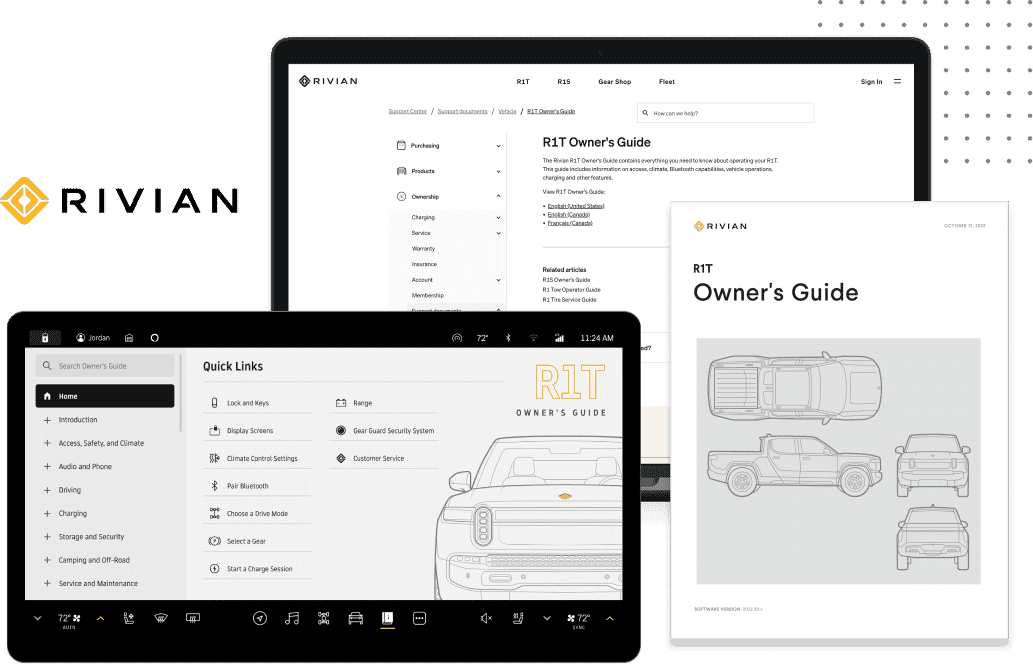What makes a company's workplace thrive? While perks, tools, and mission statements can play a role, the true foundation of a thriving workplace lies in its people. Engaged employees are the engine that drives productivity, innovation, and growth. The key to unlocking that engagement? Listening—and there’s no better way to listen at scale than through well-crafted employee surveys.
Employee surveys go beyond gathering opinions; they provide actionable insights into what motivates your team, what barriers they face at work, and where opportunities for growth exist. In this blog, we’ll explore how to design impactful work surveys, analyze the results and data, and implement effective changes that foster a company culture of engagement and connection.
Crafting Effective Employee Survey Questions
Every great survey begins with well-crafted survey questions—the building blocks of actionable feedback. Poorly designed questions can lead to vague responses, while thoughtful ones pave the way for meaningful dialogue.
- Focus on Clarity and Precision
Ask questions that are straightforward and leave no room for ambiguity. For example: "Do you feel your contributions are recognized by leadership?" instead of "Do you think management values employees?" Specificity ensures employee feedback you can act on.
- Strike a Balance Between Question Types
Use a mix of closed-ended questions for quantitative insights (e.g., Likert scales) and open-ended prompts for qualitative depth. Effective employee survey questions like, "What’s one improvement you’d suggest for our workplace?" encourage participants to share perspectives you might not have considered. - Make It Relevant
Tailor questions to address key aspects of the employee experience, such as growth opportunities, team dynamics, or work-life balance. A well-designed survey shows employees that their feedback is valued and directly tied to organizational priorities.

Analyzing Employee Engagement Survey Results
Collecting employee feedback and responses is only the beginning—the true value of an employee engagement survey lies in how the data is analyzed and acted upon. To start, break down the results into meaningful segments. For example, analyzing data by demographics, departments, or tenure can uncover disparities or potential areas of development for employees that would otherwise go unnoticed. Are newer employees facing challenges in adapting to the workplace? Does one department consistently report lower morale compared to others? Identifying these patterns allows you to tailor interventions where they are needed most.
Next, compare results and data over time to track trends and measure the impact of past initiatives. For instance, an improvement in work-life balance satisfaction scores might validate recent changes to flexible working policies. Conversely, a decline in feedback about professional growth opportunities could signal a need to revamp employee training programs.
Finally, focus on actionable feedback that directly address areas of concern. If a large percentage of employees report feeling disconnected from leadership, consider launching initiatives to enhance visibility and communication, such as regular town hall meetings or leadership Q&A sessions. By connecting the dots between the feedback and the organization’s goals, you can ensure that survey results lead to tangible improvements.

Boosting Engagement Through Targeted Questions
Asking targeted survey questions can uncover the root causes of disengagement and guide strategic actions.
Career Development:
"Do you feel you have access to resources for professional growth?"
Leadership Communication:
"How often do you receive constructive feedback from your manager?"
Recognition and Inclusion:
"Do you feel valued and included in team decisions?"
By framing survey questions to address these critical areas, organizations can implement changes that resonate deeply with employees.
Trends in Employee Engagement
The world of employee engagement is continuously evolving, shaped by shifts in workplace dynamics, role responsibilities, and employee expectations. Understanding these trends is essential for crafting strategies that resonate and make employees feel valued.
The rise of hybrid work has fundamentally changed how organizations approach engagement. With employees juggling both in-office and remote responsibilities, flexibility has become a cornerstone of employee satisfaction. Clear communication and support systems are more important than ever. Engagement surveys should include questions such as, "Do you feel adequately supported in balancing remote and in-office work?" to identify areas for improvement in this new working model.
Another significant trend is the growing emphasis on employee well-being. Organizations are recognizing that mental health and work-life balance are integral to productivity and satisfaction. Surveys can help assess how well these needs are being met by asking questions like, "Do you feel this organization supports your mental and physical well-being?".
Diversity, equity, and inclusion (DEI) is no longer a "nice-to-have" but a business imperative. Employees expect their workplaces to actively promote belonging and fairness.
Engagement surveys now frequently include questions on representation and inclusivity, such as, "Do you feel valued and treated fairly regardless of your background?" These feedback and insights are essential for building a positive employee experience and company culture that attracts and retains diverse talent.
Finally, technology is revolutionizing how engagement is measured and acted upon. AI-powered tools and predictive analytics are enabling organizations to identify patterns and address potential issues before they escalate. By leveraging these tools, businesses can create a dynamic, responsive approach to engagement.
Tools and Techniques for Engagement Surveys
To truly harness the power of employee surveys, organizations need tools that simplify and enhance the process, which is where a Learning Content Management System (LCMS) such as MadCap Create excels.
- Centralized Content Management
Store, organize, and reuse modular survey templates, ensuring consistency across departments. This eliminates repetitive work and ensures surveys stay aligned with company goals.
- Customization at Scale
Tailor surveys for diverse teams, departments, or regions while maintaining overarching alignment with organizational objectives. Whether addressing hybrid teams or global offices, flexibility and scale areiskey.
- Integrated Analytics for Deeper Insights
MadCap Create is an employee training software, enabling real-time tracking of participation rates, sentiment analysis, and trends. This empowers organizations to act quickly on emerging insights.
- Seamless Integration with Other Systems
Integrates easily with HR platforms, allowing organizations to connect survey insights directly with other employee data, enriching the overall picture of engagement.

Case Study: Harrods' Employee Engagement Transformation
Harrods, the iconic luxury retailer, faced a significant challenge with high employee turnover rates. Recognizing the need to address this, the company introduced regular employee surveys to gain deeper insights into workforce sentiment and identify areas for improvement. These surveys revealed critical issues, such as a lack of recognition and communication gaps between leadership and employees.
In response, Harrods implemented strategic changes, including leadership engagement initiatives and enhanced communication efforts. Leaders took an active role in recognizing employee contributions and fostering a company culture of transparency. Over a five-year period, these efforts paid off substantially. The company halved its turnover rates, and an impressive 91% of employees reported feeling proud to work for Harrods.
This transformation showcases the power of listening to employees and acting decisively on their feedback. By leveraging data-driven insights and prioritizing employee engagement, Harrods created a thriving workplace culture that drives both retention and satisfaction.
Conclusion
Employee surveys open doors to deeper insights into your workforce, enabling organizations to build engagement, drive productivity, and create a company culture of shared success. By asking the right survey questions, analyzing responses thoughtfully, and leveraging an LCMS such as MadCap Create, organizations can foster an empowered workforce that directly contributes to an improved employee experience, innovation, improved retention rates, and overall business growth.
Ready to transform your engagement strategy? Schedule a consultation today.










